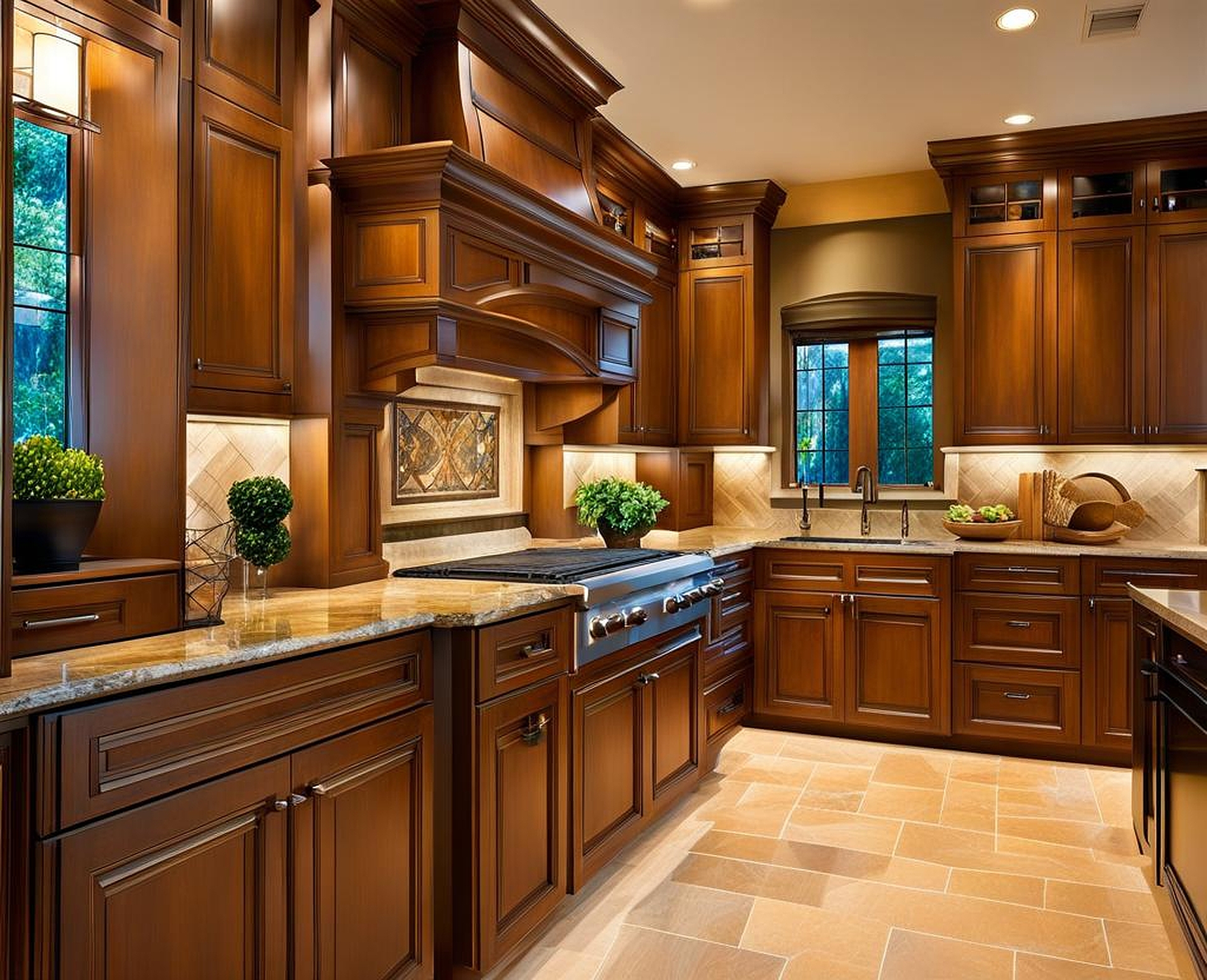As a kitchen design specialist, one of the most common questions I get asked is: how long do kitchen cabinets last? It’s an important consideration when planning a renovation or building a new kitchen. After all, cabinets are a significant investment and a key part of your kitchen’s aesthetic and functionality. The good news is, with proper care and maintenance, quality cabinets can last for decades.
Typical Lifespan of Kitchen Cabinets
On average, you can expect kitchen cabinets to last anywhere from 15 to 30 years. However, this lifespan can vary significantly depending on several factors, including the material, construction quality, installation, and how well the cabinets are maintained over time.
Some telltale signs that your cabinets may be nearing the end of their lifespan include:
- Worn, chipped or peeling finishes and veneers
- Warping, cracking or separating of the cabinet boxes
- Hinges, drawers, and doors that stick, no longer operate smoothly or don’t close properly
- Visible signs of moisture damage like swelling or mold/mildew
- An overall dated, tired or unsightly appearance that clashes with your current style
If you notice multiple red flags like these, it may be time to start budgeting for cabinet replacement or at least a significant refacing project to restore functionality and looks.

Cabinet Material Durability
The material your cabinets are made from plays a huge role in determining their longevity. At the higher end, solid hardwoods and metals can potentially last a lifetime if properly cared for. At the lower end, cheaper materials like particleboard are far less durable.
The main takeaway? You truly get what you pay for in terms of long-term cabinet durability. Investing in higher quality solid wood or plywood construction upfront can pay dividends over decades of use.
Construction Quality Matters
Beyond just the cabinet material itself, construction quality and proper installation are vital factors impacting longevity. Well-built cabinets from reputable manufacturers will far outlast cheaply made, builder-grade options.
Pay close attention to the joinery techniques used, such as:
- Doweled Joinery – Dowels inserted into holes drilled in each join. A good, standard construction method for mid-range cabinets.
- Mortise and Tenon – Considered exceptional, a very sturdy joint ideal for high-end, heirloom-quality cabinets designed to last generations.
- Pocket Screws – A decent though less refined method often found in ready-to-assemble (RTA) or budget cabinetry lines.
- Stapled/Nailed – The lowest quality method used in cheaply-made stock cabinets unlikely to hold up for long. Avoid if possible.
The quality of the cabinet hardware – hinges, drawer slides, door dampers – also impacts longevity, usability and whether everything continues to operate smoothly over decades of opening and closing.
Perhaps most importantly, proper installation by experienced professionals is critical. Cabinets that are level, securely anchored to walls/floors and have reinforced corners will hold up far better over time.
Maintaining Kitchen Cabinets
Even the finest materials and construction can start breaking down prematurely without proper maintenance and care. A few simple tips for homeowners:
- Clean Regularly – Use gentle cleaners and follow the manufacturer’s guidelines for the specific cabinet finish and material. Avoid harsh chemicals.
- Avoid Moisture – Excessive moisture is the enemy, potentially causing swelling, warping, mold and mildew. Wipe up spills promptly and ensure proper kitchen ventilation.
- Refinish or Reface as Needed – Periodically refinishing, repainting, or fully refacing your cabinets can revive their look and protect against wear.
- Check Hardware – Tighten hinges, lubricate tracks and make adjustments to keep doors and drawers operating smoothly.
- Be Gentle – Don’t overload, lean on or abuse your cabinets through improper use that may damage them over time.
With some simple precautions and consistent upkeep, you can maintain that fresh, like-new cabinet appearance and performance for many years.
Renovation vs. Full Replacement
Eventually, even meticulously maintained cabinets will reach the point where full replacement is the wisest investment. However, in some scenarios renovation through refacing or partial cabinet replacement may be a more budget-friendly solution to consider first.
Some key factors to weigh when choosing renovation vs. full cabinet replacement:
- Cost – While cheaper upfront, renovations like refacing have a shorter 10-15 year expected lifespan compared to 30+ years for all new cabinets.
- Quality – If your existing cabinet boxes are still in great structural shape, refacing can give an all-new aesthetic at a fraction of replacement costs.
- Design & Layout – Complete replacement allows you to totally reconfigure the layout, add more storage space and entirely new functionality your old cabinets didn’t offer.
- Scale – With kitchens over 200 sq ft or very dated/damaged cabinets, full replacement often makes more sense than partial box/facing renovations.
In smaller kitchens with a more limited scope of work, mixing new cabinet boxes or sections with existing renovated cabinetry may also help stretch project budgets.
With cabinets being such a major part of your kitchen investment, it makes sense to take steps “future-proofing” them as much as possible for maximum value and longevity. Here are my top recommendations:
- Timeless Styles – Stick with classic raised or recessed panel door styles, neutral wood tones and avoid super-trendy finish colors/materials that may look dated in 5-10 years.
- Flexible, Modular Storage – Opt for built-in organizational accessories like roll-out trays and racks. These provide long-term versatility as your kitchen needs change.
- Quality Construction – Invest in cabinets featuring sturdy joinery, all-plywood boxes and full-extension drawers/slides from reliable brands known for longevity.
- Protective Finishes – Upgrade to catalyzed finishes or premium varnishes better able to withstand heat, moisture and wear compared to standard paints or laminates.
- Proper Installation – Hire experienced, licensed contractors to ensure your new cabinets are perfectly leveled, secured and fitted correctly for lasting performance.